Olmec Civilization
Forget the Aztecs and the Maya for a second. Way before them, a group called the Olmecs dominated the tropical lowlands of Mexico. From roughly 1800 to 400 BCE, they built the region's first complex society, creating a blueprint that everyone else would follow. Their rise marked the true beginning of Mesoamerican civilizations, setting cultural patterns that shaped thousands of years of history across the region.
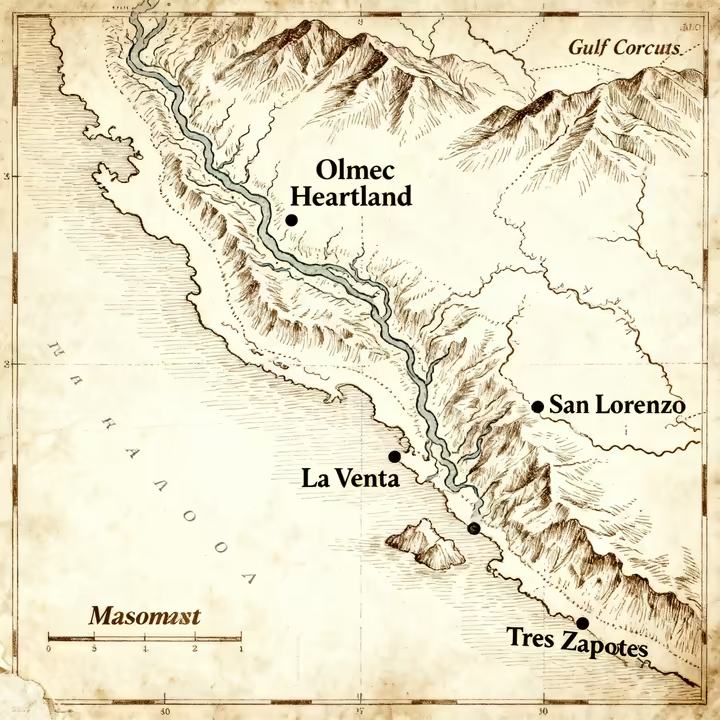
The "Mother Culture" Debate
Early archaeologists called the Olmecs the Cultura Madre , or "Mother Culture" of Mesoamerica. The thinking was they invented all the cool stuff first, gods, stone carving, the ballgame, and passed it on. Now, some scholars think other cultures developed alongside them as "sister cultures."
But the Olmecs had a huge influence, spreading their art and ideas through trade. They controlled access to fancy goods, so their style became a status symbol for leaders in other regions. They were the main source for a tradition that shaped Mesoamerica for 3,000 years.
The Olmec Heartland
Where They Lived
The Olmec heartland was in the hot, humid lowlands of Mexico's southern Gulf Coast. The Aztecs later called the people there the Olmeca , or "rubber people," a name that stuck. The swampy environment was actually a plus, with fertile soil for farming and rivers for trade.

They got huge basalt boulders for their sculptures from the nearby Tuxtla Mountains. Precious jadeite, however, was imported from far away.
A Quick Timeline
The Olmec story begins around 1800 BCE, growing out of early farming villages. Their first great city, San Lorenzo, rose around 1400 BCE, setting the pattern with big buildings and those famous giant heads.
After San Lorenzo fell around 900 BCE, power moved to La Venta, which became famous for its huge pyramid. But around 400 BCE, La Venta was also destroyed and abandoned. While some Olmec traditions continued in places like Tres Zapotes, their time as a major power was over.
Society and Daily Life
Rulers and Elites
Olmec society was strictly hierarchical. A powerful elite class lived in large ceremonial centers like San Lorenzo, controlling resources and a massive workforce. At the very top were the "Shaman-Kings," who were both political and religious leaders.
These rulers claimed to be descended from the gods, which gave them the authority to command people. They showed off their power by building huge monuments that took a ton of labor.
Common People
For the average Olmec, life was simpler. Most were farmers and fishers living in small villages, often on mounds to avoid floods. Their homes were probably single-room huts made of earth and poles.
They grew the classic "three sisters" combo of maize, beans, and squash. They also got protein from fishing in the rivers and hunting local animals.
What They Looked Like
Figurines suggest their clothing was simple, just loincloths or skirts made from cotton. But they loved jewelry, which was a clear sign of social status. Elites wore fancy headdresses and ornaments, with rulers sporting polished mirrors on their chests and carvings of precious jade.
Art and Engineering
The Colossal Heads
If the Olmec civilization is known for one thing, it's the colossal heads. These massive stone portraits of rulers can be up to 10 feet tall and weigh 40 tons. Each face is unique, with its own helmet, maybe a kind of personal logo.
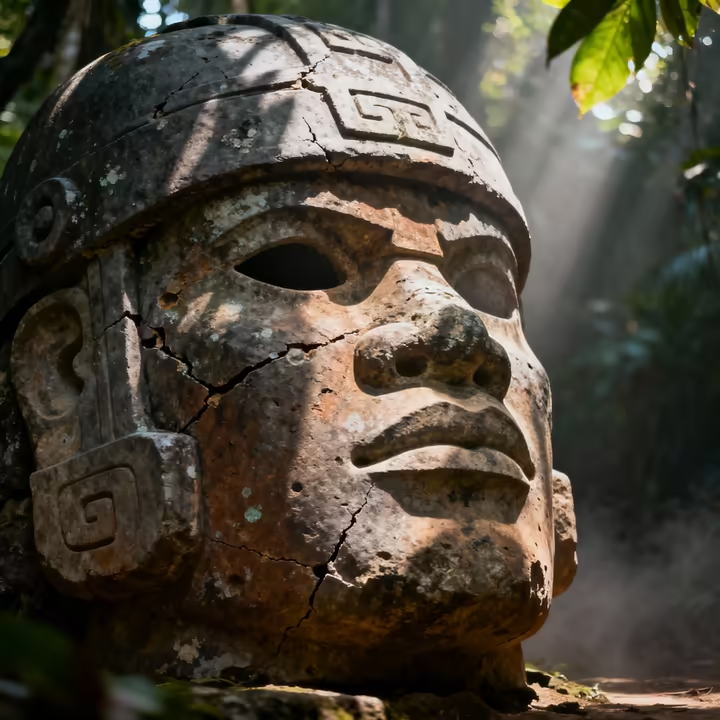
Making them was a massive undertaking, dragging boulders for up to 50 miles. Fun fact, many heads were recarved from stone thrones. When a ruler died, his throne became his portrait.
The Were-Jaguar and Other Carvings
Olmec artists were also master carvers of jade, all done without metal tools. A common design is the "were-jaguar," a human-jaguar hybrid with a snarling mouth and almond-shaped eyes. This creature likely represented a ruler's spiritual power or a rain god.
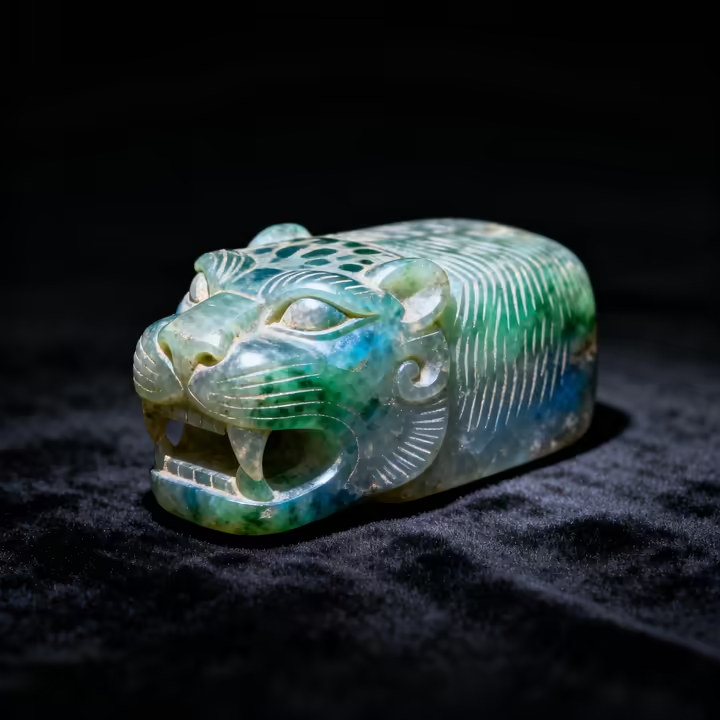
Early Engineers
The Olmecs were Mesoamerica's first great engineers. Their cities were carefully planned, and they built the region's first pyramids. At San Lorenzo, they even built a complex aqueduct system using carved stone to manage water.
Gods, Worlds, and Rituals
The Gods
Olmec religion became the foundation for later Mesoamerican cultures. Their gods included an earth monster (the Olmec Dragon), a Maize God, and a Rain Spirit that looked like a were-jaguar. They also worshipped a Feathered Serpent, a god who became hugely important later on.
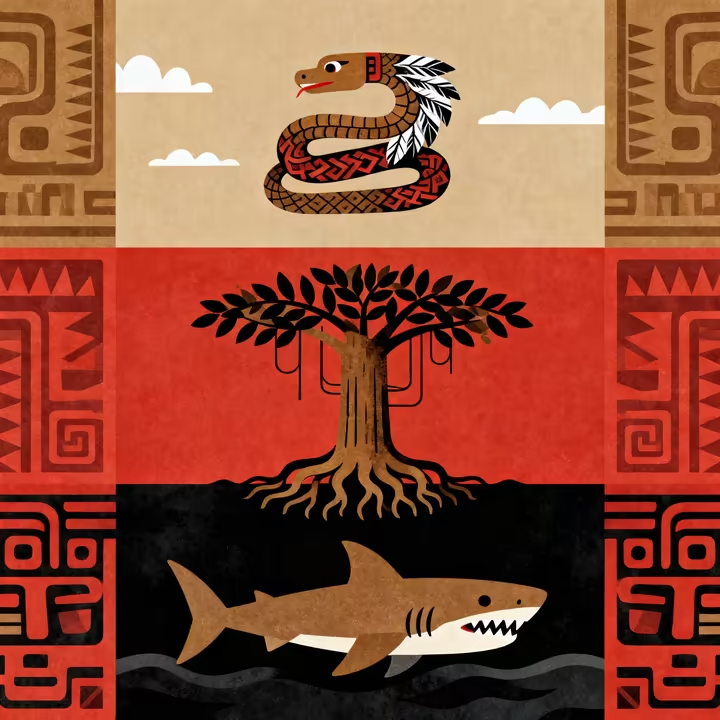
The Three Worlds
The Olmecs saw the universe as three levels: the sky world above, the human world in the middle, and a watery underworld below. They believed places like caves and mountains were portals between these worlds. Caves were especially sacred gateways to the supernatural.
Rituals and Sacrifice
Rituals were led by Shaman-Kings, who were believed to transform into animal spirits like the jaguar. Ceremonies took place in city plazas where they buried precious jade as offerings. They also practiced bloodletting and possibly infant sacrifice.
So, What Happened to Them?
The Olmec didn't just vanish. Their decline was a slow burn over several centuries, as their main cities were abandoned one by one. There's no single easy answer, it was likely a mix of problems.
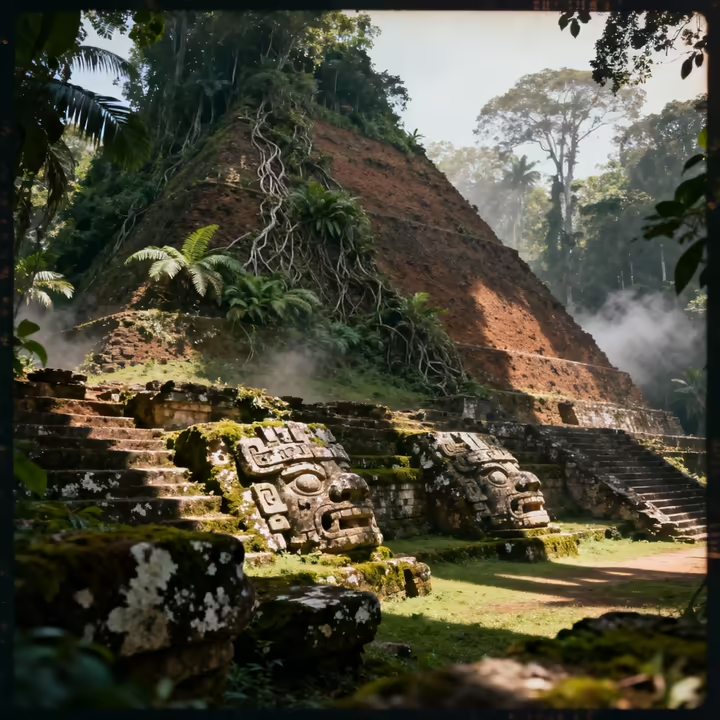
Environmental Problems
Mother Nature might be to blame. Volcanoes could have buried farmland in ash, or soil erosion might have caused rivers to change course. That would have cut off their main source of travel and food.
People Problems
A bad environment likely caused social unrest. If rulers couldn't prevent famine, people would lose faith in them. The smashed monuments at San Lorenzo hint at an uprising or war.
Disrupted trade routes could have also cut off the supply of luxury goods that the elites relied on to maintain power. It was probably a combination of these problems that led to the cities being abandoned.
Their Lasting Legacy
Even though their cities were swallowed by the jungle, the Olmecs' influence never died. Their culture became the blueprint for later civilizations like the Maya and Aztecs.
A Culture of Firsts
The Olmec checklist of "firsts" is long. They may have developed the first writing system in the Western Hemisphere and likely invented Mesoamerican calendars and the concept of zero.
You can also thank them for the ritual ballgame, a sport played with rubber balls as early as 1600 BCE. Their gods and rituals, like bloodletting and worshipping a Feathered Serpent, became standard for nearly all later Mesoamerican religions.
Modern Descendants
So who are their descendants? Linguists believe the Olmecs spoke an early form of a Mixe-Zoquean language. This provides a link to the modern Mixe and Zoque peoples who still live in the same region today. They are likely the direct cultural descendants of the Olmecs.
The Bottom Line
The Olmecs were Mesoamerica's trendsetters. They built the first big cities, carved the first giant heads, and established a complex state. They created the cultural rulebook that was used for thousands of years.
Even though their civilization faded, their ideas were picked up by the Maya, Zapotecs, and eventually the Aztecs. They are the first chapter in the story of ancient Mexico.
To see how later civilizations built on the Olmec foundation, check out Teotihuacan vs. Tenochtitlan , a deep dive into two of Mesoamerica’s greatest cities and how they reflected the Olmec legacy in different ways.